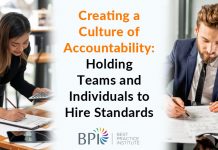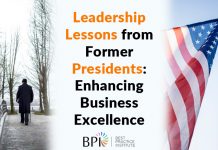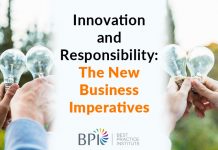In today’s uncertain economic climate, the ability to identify effective and actionable solutions to business challenges is more crucial than ever to the strategic management process. When there are substantial problems to be solved, best practice benchmarking providers can be invaluable to top-level decision-makers presented with complex organizational puzzles and an overwhelming abundance of possible solutions. By using carefully refined analytical techniques, a wealth of management expertise, and the power of collaboration among dedicated business professionals and the businesses themselves, benchmarking organizations can help companies to make sense of the universe of potential strategic directions.
Finding the right benchmarking provider to meet the needs of your company, however, is not always easy. Nearly every veteran business leader has had the unpleasant experience of working with a consultant or consulting group that wasted too much time, failed to deliver usable solutions, or simply was not a good fit for the company. Choosing the wrong benchmarking provider can result in wasted time and money, as well as employee frustration and morale problems. The key to identifying the right benchmarking provider for your needs can be found by looking at what methods are common to proven and recognized best practices benchmarking groups, and how they make use of these methods to understand business problems, effectively gather organizational data, and deliver meaningful action plans that provide real and measurable economic benefit to your company.
Critical Success Factors
The common techniques and methods used by world-class benchmarking providers are the result of many years of observation and experience, as well as the accumulated strategic expertise of seasoned business professionals. The use of discovery processes that have been tested, verified, and refined through implementation allows quality best practice organizations such as PetroSkills, Best Practice Institute, Corporate Leadership Council, and APQC to focus their resources and those of the client on tasks and targets that ensure meaningful results. The “best of best practice” methodologies promote not only the solution to the problem, but a better understanding of underlying causes and related issues that can be used to identify and solve emerging challenges as well. Here are six of the critical success factors common to top-ranked strategic benchmarking providers operating in today’s global business environment.
1. Intensive Planning and Problem Analysis
Whether the issue you’re trying to solve is meeting a recruitment target, lowering administrative overhead, or boosting regional sales, simply rushing to produce a right-sounding solution may cause you to miss the underlying causes of the original problem, or cover up other issues that may lead to problems in the future. Industry-leading benchmarking organizations begin with intensive investigation into the details and background of the problem, not just research into possible solutions, in order to make sure that the right problem is being solved. The six-step model employed by Best Practice Institute applies this approach to talent and leadership development, dedicating the first two steps of the process to identifying available talent in the organization and mapping areas for potential improvement before determining and executing talent management and growth solutions.
Placing a high-priority on up-front research also facilitates the creation of detailed project road maps that coordinate schedules and personnel in order to drive efficient use of resources and minimize disruptive impact to ongoing business processes. Rachele Williams, Program Manager of Research Services at APQC, states that “…planning is 30% to 40% of the effort..” that goes into organizational initiatives, allowing APQC to work with client companies in a streamlined and effective manner to establish benchmarks, identify performance metrics, and lay the groundwork for continuing improvement. By investing effort up front to fully understand the scope and causes of the issues facing the customer, quality best practice organizations ensure that the benchmarking experience yields detailed organizational knowledge as well as workable solutions to existing problems across industries.
2. Transferable Solutions
Careful research into the root causes of business problems is also key to developing solutions that apply across business divisions and industries, enabling duplication in other areas of the company, and adding to a global library of potential solutions. By abstracting out the business fundamentals of a given problem and the context surrounding it, best practice groups are able to avoid distortion of the issues based on particular instances of a problem. Focusing on root causes leads to solutions that can be broadly applied wherever the issue is occurring within the client company, adapting to specific local requirements. Conrad Schmidt, Executive Director and Chief Research Officer of HR Practice at the Corporate Leadership Council (CLC), describes the benefit of analysis “…down to a molecular level…that almost every organization shares” as enabling the reframing of problems and solutions in a common language, opening up the field of potential solutions to a variety of successful approaches implemented by other companies. This means that benchmarking organizations focusing on transferable solutions are able to offer a range of proven and well-documented best practices that can be adapted to the needs of the client, or serve as inspiration to drive productive discussion around other potential solutions.
The transferable solutions approach can also help to promote networking between business leaders in a wide range of industries. Best Practice Institute encourages the formation of collaborative relationships among executives and thought leaders of client companies, enabling the sharing of insight into common problems and the synthesis of new solutions from a variety of backgrounds and experiences. Transferable solutions to business problems break down language barriers and industry-based closed circles, providing the client company with a positive community environment in which to determine new solutions and pathways to continuous improvement.
3. Strategic, Not Tactical
When faced with a tough business problem or a far-reaching goal, it is easy to fall prey to the temptation to find solutions based on particular tools or methods. With a wealth of information at our fingertips about new technologies and novel management techniques, it is easy to become overwhelmed, and to over-focus on the capabilities of available tools, rather than the broader strategic goals of the company. Best Practice Institute employs a proprietary six-phase Best Practice Systems Model, cycling through the phases of evaluation, diagnosis, assessment, design, implementation, and support/reinforcement as needed, in order to maintain focus on continuous strategic improvement rather than the nuts and bolts of implementation. An approach such as this avoids the pitfalls of tactical myopia by constantly re-evaluating results against strategic benchmarks. Subordination of tactical details to strategic targets, coupled with frequent reassessments, serves to prevent “tunnel vision” during the improvement process.
Getting stuck at the tactical level of problem solving can also be avoided through rigorous analysis of underlying business problems. The transferable solutions approach employed by decision support companies such as the Corporate Executive Board provides an understanding of the deeper issues facing client companies, focusing on root causes in order to clarify present and emergent business needs. Approaches such as this help to foster a culture of questioning flawed assumptions and maintaining focus on the broader goals of the organization.
4. Building Communities of Practice
Thanks to the highly connected global marketplace that the business environment has become, it is easier than ever before to reach out to other professionals in order to build collaborative networks as long as there are shared common business goals. Numerous business leaders worldwide are discovering the benefits of coming together to share experiences, brainstorm solutions to common problems, and gain inspiration from positive communities of their peers. PetroSkills, a company specializing in training and consulting for the petroleum industry, works to develop meaningful training standards and competency maps for oil-producing companies. Ford Brett, Managing Director of PetroSkills, characterizes the process as “building (competency maps) through networks – BP, Shell, Chevron, Saudi Aramco – not through committees”, adding that “We facilitate these networks of competing companies for the mutual gain of all.” By leveraging the common need among competitors for a common human capital framework, PetroSkills is able to draw together a network of industry thought leaders to develop and refine workable training solutions and competency standards.
Communities of practice can also build productive synergy among companies from widely differing industries. Best Practice Institute, founded by companies such as Saudi Aramco, Bank of America, Corning, GlaxoSmithKline, and Johnson & Johnson, has assembled executives and thought leaders from a variety of fields, including banking and finance, pharmaceutical, information technology, and military leadership training institutions. Brian Bules, Head, Global Talent Solutions and Effectiveness, GlaxoSmithKline, describes BPI as “a place for competitors and alliances to come together and collaborate for change worldwide”. BPI has built a community of business and management professionals engaged in the development and enhancement of shared solutions to existing and emerging opportunities and issues. Brian Fishel, Senior Vice President of Enterprise Leadership Development at Bank of America, describes the community experience as an ideal networking environment, saying “Best Practice Institute brings together executive peers with similar business goals that I never would have uncovered otherwise. It has become a great platform for stimulating ideas, challenging my assumptions and hypotheses around things, but more importantly, forcing me to go back and ask questions.” By enabling positive and productive idea-sharing and networking experiences for participants, leading best practice organizations can foster communities of practice that give rise to novel solutions, new best practices, and successful business alliances.
5. Clear and Frequent Communication
The building of effective relationships is crucial to best practice identification and benchmarking processes. Positive relationships enable better analysis, more candid and insightful discussion, and a greater chance of success in the implementation of best practices, by promoting a higher degree of buy-in from principles and executives, and improving collaboration with front line employees. No factor is more crucial to building these relationships than client confidence in the process and in the benchmarking organization. Quality best practice organizations make constant, meaningful communication and process transparency the backbone of their interactions with client companies and organizations in order to foster confidence, build morale, and inspire client companies to fully invest in the shared initiative of strategic improvement.
Rachele Williams, Program Manager of Research Services at APQC, identifies “Clear and Frequent Communication” as one of the critical success factors for benchmarking best practices. APQC utilizes a collaborative research study approach to identifying strategic improvement areas in client companies, creating learning teams made up of client executives, thought leaders, and APQC process improvement experts equipped with an extensive knowledge base of best practice solutions.
The approach employed by the Best Practice Institute also focuses on direct client engagement and frequent communication throughout the benchmarking process. The BPI method utilizes up-front interviewing, carefully designed and chosen peer/benchmarking groups, a process for solving problems in real time and in virtual sessions, and consistent follow-up, support, and evaluation of the practices to ensure a high-degree of client participation, executive buy-in, and measurable success. Working closely with clients at every step of the benchmarking process and beyond, keeping them “in the loop” and providing meaningful support, fosters a partnership mentality that contributes greatly to the achievement of strategic company goals.
6. Providing Actionable Results
The field of best practice benchmarking is full of consultants and firms offering strategic analysis, metrics for success, and paths to process improvement. Too often, however, the only return a client company receives in exchange for considerable time and money is a bundle of vague aphorisms and buzzword-laden business generalities. Top benchmarking providers distinguish themselves from the pack by delivering not only analysis and strategic advice, but concrete solutions and empirical performance targets. Delivering to the client a clear path forward, and measurable benchmarks to determine success, should be the standard for quality benchmarking organizations.
When identifying best practices, Conrad Schmidt, Executive Director and Chief Research Officer of HR Practice at the Corporate Executive Board, asks “Did it result in distinctive benefit? Was the level of investment to create solution less than the benefit that was created?” Demanding measurable results from potential best practice solutions allows the Corporate Executive Board to provide solutions that make a positive economic difference, and to objectively demonstrate the value of these solutions to client companies.
Continuous Improvement
These critical success factors enable world-class best practice benchmarking organizations to identify workable solutions, to build collaborative communities that promote meaningful dialogue and the development of strategic excellence, and to provide client businesses with usable roadmaps to achieve performance targets. In a dynamic, and uncertain global business environment, the optimal strategic position for any company is constant movement toward improvement and refinement of management, leadership, and communication. The best of the best practices benchmarking organizations will be those who leverage both existing libraries of best practices, and collaborative alliances of business professionals and thought leaders to expand existing ideas into innovative new approaches. The full benefit of best practice benchmarking will be realized by those companies that have a strong desire to continuously evolve towards a better understanding of what makes great companies become the most effective organizations in the global business realm.










